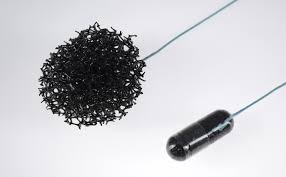 A minimally invasive test that collects patients’ esophageal cells that results in a more than 10-fold increase in the detection of Barrett’s esophagus over usual care, and also detected early cancer cases (BEST-3 cluster randomized trial).
A minimally invasive test that collects patients’ esophageal cells that results in a more than 10-fold increase in the detection of Barrett’s esophagus over usual care, and also detected early cancer cases (BEST-3 cluster randomized trial).
Among more than 13,000 patients on long-term acid suppression, 2% of those offered the Cytosponge-trefoil factor 3 test were diagnosed with Barrett’s esophagus, as compared to 0.1% of those who received usual care.
It is a safe, and generally acceptable test to administer in the general practice clinic setting.
Among the participants in the intervention group who successfully swallowed the Cytosponge device, tested positive for TFF3, and underwent endoscopy, 59% were diagnosed with Barrett’s esophagus or cancer.
An estimated 3% to 6% of individuals with gastric reflux have Barrett’s esophagus, the precursor lesion to esophageal adenocarcinoma, but only about 20% of these are diagnosed.
The Cytosponge Cell Collection Device is a small pill attached to a thread, which when swallowed expands in the stomach to a sponge that is pulled back up through the throat, collecting cells from the esophagus for analysis with the laboratory immunohistochemical biomarker TFF3.
Current standard of care for detecting Barrett’s esophagus is upper endoscopy, which is expensive.
Cytosponge is an inexpensive, readily available test which can be used for screening of Barrett’s in primary-care offices, reducing the need for endoscopies.
It is easy to apply to large areas of the esophageal surface, and can assess larger areas compared to a set of biopsies.
Over an average of 12 months’ follow-up, the estimated cumulative rate of Barrett’s esophagus was 20.2 per 1,000 person-years in the Cytosponge group and 2.0 per 1,000 with usual care.
The TFF3 test currently requires manual reading by a cytopathologist.
